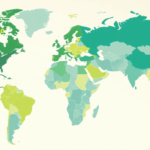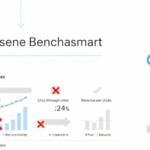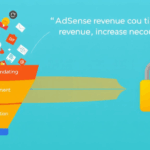Why Ads From High-Paying Regions Don’t Always Pay Off
AdSense Geotargeting Is Not Magic — It’s a Guessing Game
People talk about geotargeting like it’s some laser-precise way to boost AdSense earnings. Spoiler: it isn’t. You can’t just target traffic from the US, UK, or Germany and watch RPMs explode. I’ve tried it — multiple sites, different verticals. Once, I even built a whole content cluster around Canadian fintech just to chase higher CPCs. It bombed. Traffic came in, RPM stayed below five bucks. Turns out, the traffic source and page engagement crushed CPM no matter where the user lived.
Geotargeting in AdSense is essentially metadata over-interpretation. Google’s algorithm isn’t always great at mapping what “UK user” really means in ad bidding context. Say you’re getting UK users through a Telegram group — that traffic is gonna monetize like garbage. Compare that to UK organic traffic from money-related blog content, and the difference can be 4x. Yet both are coming from a .co.uk IP.
There’s also overlap between location and language you can’t always untangle. One experiment I ran pulled thousands of users labeled US in GA4, but when I drilled down: 60% had devices in Vietnamese. Almost every ad impression ended up being low-CPC Asian market filler, not the juicy credit card inventory I expected.
The Dirty Reality of RPM Spikes
Here’s where people panic: you’ll sometimes see one country generating almost all the AdSense revenue on a site with international traffic, and it leads you to chase it harder. I tried to replicate a US RPM spike by feeding Facebook traffic only from Denver and Austin — direct location inclusion in FB’s ad set. Average RPM dropped instead. Why? Because niche content mismatches hurt even more when you compress ad inventory unpredictably.
RPM is calculated from pageviews not users, and unless your high-paying users are consuming more than one page, you’re screwed. One section of my site got over 800 visits from Zurich in a day (a VPN bump mess, I think), and earnings were $0.09. Nada. Doesn’t matter if that traffic was technically from a premium region with high bid competition. If average time-on-page is low, or bounce is high? Say goodbye to decent CPM.
“It wasn’t until I added one specific internal link in the first 300 words that RPM jumped by 40%. Just linking to a second post about the same bank. Go figure.”
So geotargeting without increasing session depth is almost useless. You want high-paying regions but also sticky content and highly indexable structures.
When Preferred Regional Ads Just Don’t Show
Now here’s one for the debugging pile: I once set up a geo-fenced native ad layout that should’ve shown EU financial products to EU traffic. Nothing was broken in the layout — all script calls were resolving, no console errors. But the units kept showing Indian job ads. I lost two days trying to tweak auto ads before someone on Reddit floated the idea that the user’s Chrome browser was pulling from a localized profile cache tied to their Google Account… not their IP. That changed everything.
If Google thinks the account is “India-first,” like say the user signed up years ago somewhere in Delhi and never changed their ad preferences, your geo assumptions get tossed. Traffic ≠ intent ≠ profile.
An unlisted behavior I eventually confirmed via comparing GA4 with AdSense performance: multi-account session overrides. One visitor had their location tagged as France, and on-screen I literally saw UK mortgage ad units loading. They were logged into multiple Chrome sessions. The primary synced account (visible only in browser devtools) was based in the UK. AdSense traced that, not the IP.
Country-Level Blocking Often Backfires
I’ll admit it — I once tried to juice performance by blocking low-paying countries altogether via Cloudflare firewall rules. Myanmar, Nigeria, most of Southeast Asia gone. It actually worked, briefly. My RPM in GA4 looked higher for a few days. I bragged in a Slack group. Bad move.
Turns out, site-level user behavior dropped too. Much of that traffic had decent scroll depth, and even occasional conversions. I’d been attributing low click-through rates to them unfairly. Also, by removing bulk traffic, Google’s Smart Bidding learned slower for the entire site. Bidding logic is site-wide — and if you intentionally remove 30-40% of traffic, you’re training AdSense to expect lower ads per session.
- Don’t block countries directly — use passive suppression (e.g. lazy-load fewer units for them).
- Use GA4 event-based dimensions instead of just sessions by country.
- Match AMP vs non-AMP performance by region. AMP often underperforms in “high CPM” countries due to forced minimalism.
- Use a custom log to track actual
window.adsbygoogle.lengthon screen by country. Most accurate reflection of load behavior. - Measure RPM over revenue + engagement time, not just impressions.
People assume cutting low-performing countries will force more premium ad inventory. I learned the hard way that losing traffic velocity starves Google’s auction intelligence of actual context.
Why High CPC Doesn’t Trick the Auction
Advertiser CPC ≠ publisher RPM, and this disconnect is where a ton of would-be revenue optimization breaks. I had this theory that if a high-CPC keyword like “health insurance USA” appeared in the first paragraph and H1 of a post, it would attract better ads for US visitors. Nope. What actually happened is that page-level Quality Scores tanked.
AdSense uses a form of site-level behavioral feedback to label domains over time. If you suddenly start shoving high-CPC phrases in obvious content holes, the system flags mismatches. I found this by spotting an undocumented fallback mode in the ad log where the system was injecting PSAs instead of live units. No violation issued — just ghosted ads. The page technically had ads… they just never filled.
// Chrome devtools network tab, ad request response:
"auction_fallback":"true",
"note":"low page-quality signal"
This key prevented all regional bidding on that post. I removed the obviously-stuffed terms, added FAQ schema and let it sit two weeks. Units reappeared — with very average RPM, but they were live again. So if you’re trying to game higher CPC by writing toward certain verticals without meaningful anchor content, the algorithm will just step over you.
Bad Location Detection Still Happens — Especially on Mobile
The number of times I’ve had to re-check location detection middleware is getting out of hand. Mobile traffic from Android cents-on-the-dollar ad countries like Bangladesh will sometimes report US or UK in GA4 if they’re using Chrome with a Google VPN variant enabled. It’s subtle, but it skews country RPMs badly. You look and think, “Wait, UK traffic just dropped in value 70% today,” when in reality — you’re getting misreported device origins.
The same glitch rolls over if you’re using Cloudflare’s IP geolocation insert. On misconfigured shared IP pools, the header can flip-flop depending on network strength. One night, half my search traffic from Poland was showing up as German. Ad units started bidding GDN hotel offers in Frankfurt instead of fintech leads in Warsaw. CPC cratered in five hours. The fix? Strip and log user-agent + IP headers client-side before any ad scripts fire.
Minimal script that helped:
fetch('/geo-log', {
method: 'POST',
headers: {
'Content-Type': 'application/json'
},
body: JSON.stringify({
ua: navigator.userAgent,
lang: navigator.language,
ip: userRealIP // pulled from backend
})
});Did it fix AdSense? Not directly. But it gave me enough data to start excluding skewed IPs from my regional RPM reports. Saved me chasing fake UK drops again.
Region-Specific Ad Blocks Can Stall Crawling
There’s this myth that showing different ad units to different regions helps optimize yield. In theory that’s true. In practice: Googlebot **does not execute JS** reliably for region-specific containers. If you use a server-side geo plugin to wrap ads in country blocks, those pages can appear to have no ad inventory on crawl.
Back in January I had a whole set of URLs targeting high-paying expat areas in Singapore and targeting SEA traffic for remittance ads. I wrapped the ad unit in a PHP-based geofence template. Crawled fine for users… but when I ran a render test in AdSense, the logs showed 0 ads per page. I moved to universally loading ads with client-side display suppression for some regions only. RPM jumped because Google could finally understand they EXISTED.
It was such a stupid oversight. The crawler doesn’t trip the same rendering path. If the ad isn’t visible in no-JS mode (yes, they still fall back to it for evaluation!), your whole page looks unmonetizable during scoring phase. I’ve since added a no-op fallback for any geo-hidden ad spot — just an empty <div> with “ad here” comment so it keeps the DOM node.
So yeah, if you’re hiding ads entirely from certain countries using server-side detection, you’re kneecapping potential ad score calibration for everyone else.














